Key takeaways:
- Breakdancing combines essential elements such as toprocks, footwork, freezes, and power moves, which form the foundation for personal expression.
- Mastering turns enhances flow, style, and control, making them critical for overall performance in breakdancing.
- Key techniques for perfecting turns include proper foot placement, engaging the core, and practicing in front of a mirror for instant feedback.
- Avoid common mistakes like losing balance, rushing turns, and holding your breath, as these can hinder performance and technique.
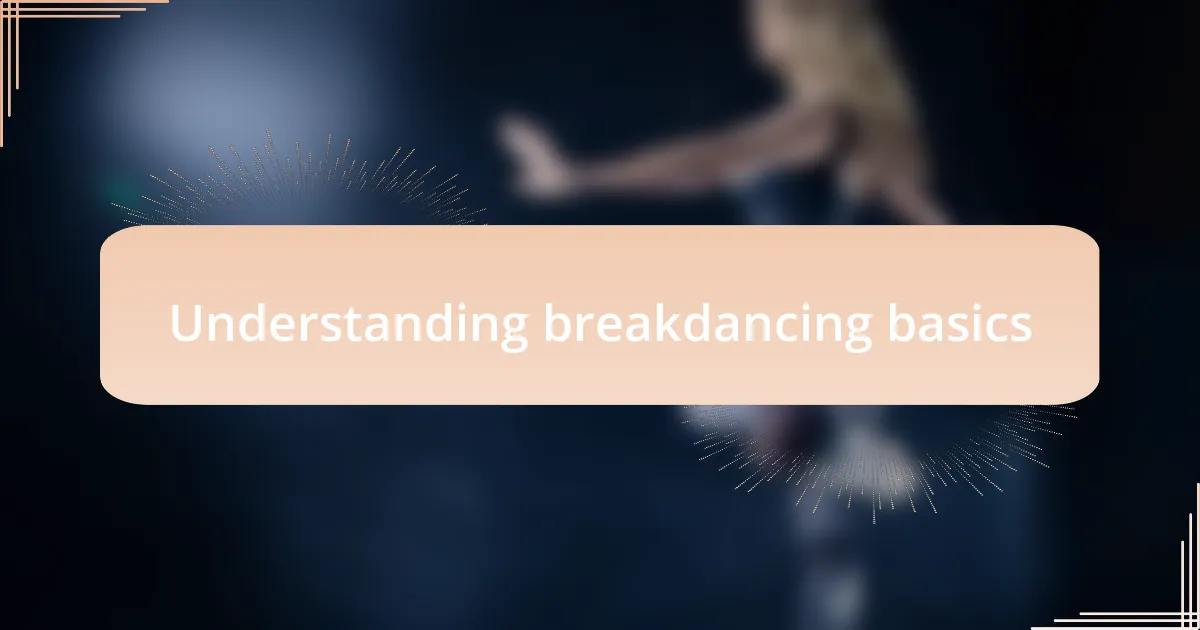
Understanding breakdancing basics
Breakdancing, or B-boying, is a dynamic street dance that combines intricate footwork, stylized movements, and acrobatic elements. I remember the first time I stumbled into a cypher; the energy was electric, and I was captivated by how each dancer expressed themselves through their unique style. Isn’t it fascinating how a single dance form can allow for so much individual creativity while still being rooted in a shared community?
At its core, breakdancing revolves around essential elements such as toprocks, footwork, freezes, and power moves. Each element builds upon the others, forming a cohesive structure that dancers use to showcase their skills. I often find myself revisiting the basics, because they are truly the foundation of everything we do; without mastering them, how can you hope to innovate your own style in a dance that thrives on personal expression?
Understanding the nuances of these elements is crucial for developing your own flair. Have you ever watched someone effortlessly blend different moves together? That fluidity often comes from a deep understanding of breakdancing’s basics and restless practice. It takes time, patience, and a willingness to learn, but witnessing your progression can be incredibly rewarding.
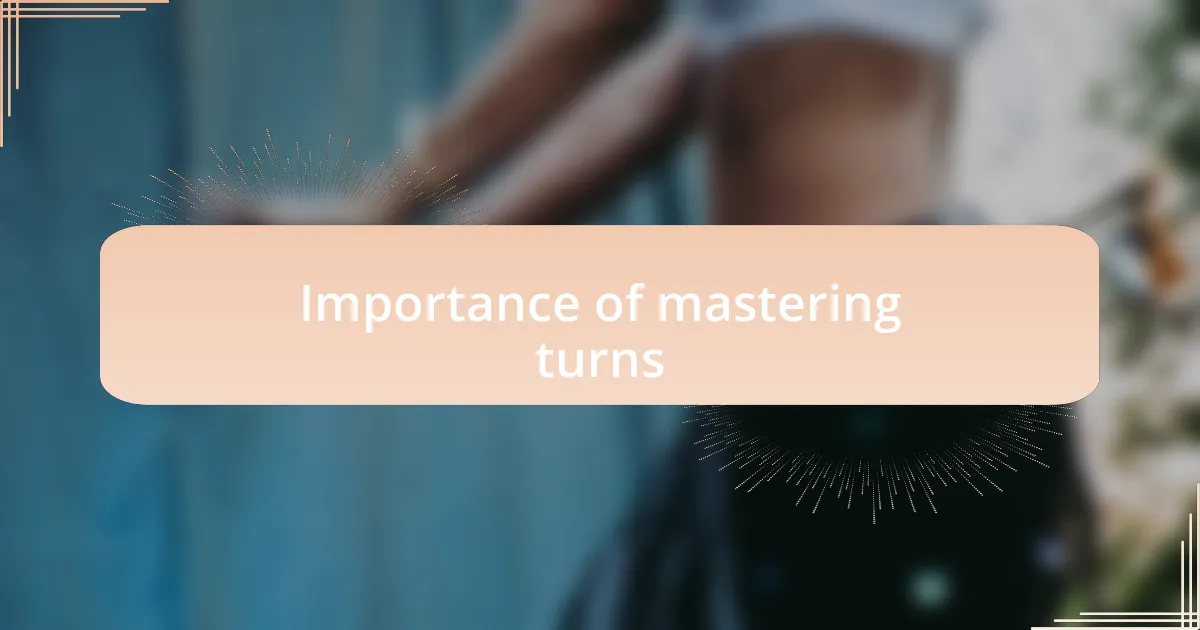
Importance of mastering turns
Mastering turns is vital in breakdancing because they serve as a bridge between different moves, enhancing the overall flow. I recall the first time I integrated a smooth turn into my routine; it felt like unlocking a new level in a video game. The ease with which I transitioned from one move to another left me exhilarated and craving more practice. Isn’t it incredible how such a simple movement can elevate your entire performance?
Turns also add an element of style and personal flair to your dancing. When I watch other dancers execute their turns with confidence, I can’t help but feel inspired. Each turn tells a story, showcasing not just technique but also the dancer’s individual personality. It’s a reminder that every detail counts in breakdancing, right down to how you transition from one position to another.
Moreover, perfecting turns builds essential strength and control. I often teach newcomers to focus on their body alignment during a turn because improper technique can lead to slips or falls. Have you ever stumbled mid-move? Trust me, there’s nothing more frustrating than losing momentum due to a messed-up turn. Investing time to refine this skill not only enhances your dancing but also boosts your confidence, which is key in performances.

Essential techniques for perfect turns
Focusing on your foot placement can dramatically improve your turn technique. I remember a session where I struggled with making my turns look clean. The moment I adjusted the way I positioned my feet—ensuring they were firmly planted and balanced—I felt an immediate difference. Have you ever noticed how the smallest tweaks can create such a big impact?
Another crucial aspect is to engage your core while turning. When I first started breaking, I overlooked this and often found myself wobbling precariously. Once I became aware of how using my core muscles stabilizes my body, my turns became not only smoother but more powerful. I urge any dancer to pay attention to their abdominal engagement; it truly transforms your control.
Lastly, practice your turns in front of a mirror, if you can. Observing yourself allows for instant feedback, and I can’t emphasize how much this helped me refine my technique. Watching my own progress, I realized that turns aren’t just about physical movement; they reflect how well we understand our bodies. Isn’t it fascinating to see how practice shapes not just our skills but our artistry?
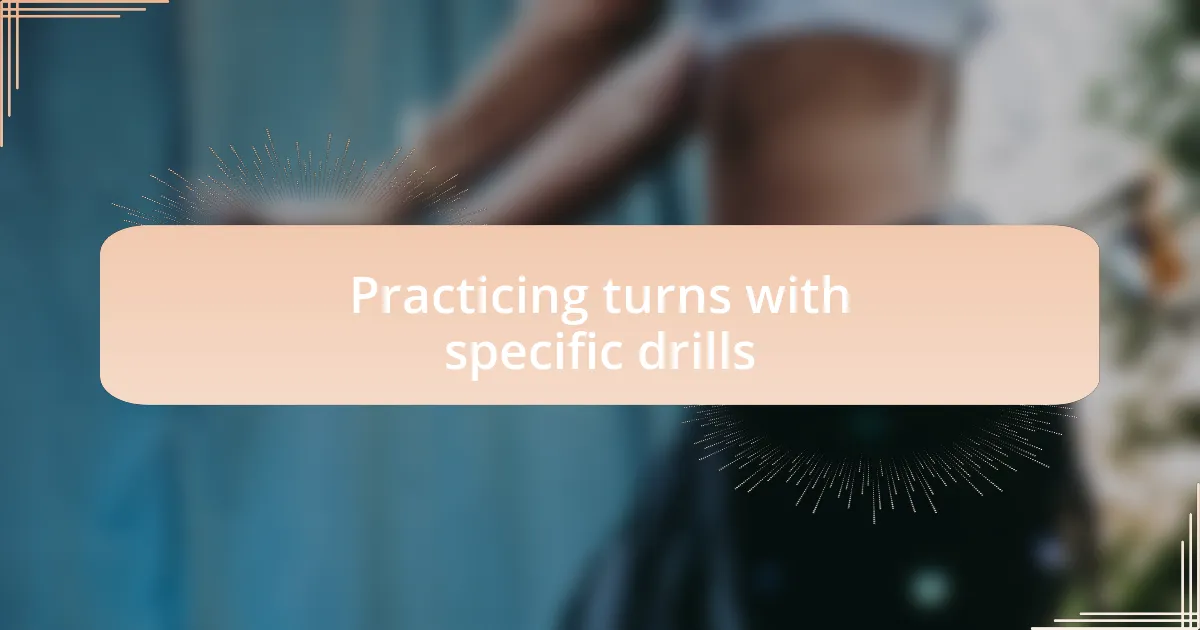
Practicing turns with specific drills
One of my favorite drills for perfecting turns is the “spotting technique.” I remember being completely captivated watching experienced dancers seamlessly twirl while keeping their eyes fixed on a point. When I tried this myself, I found that retaining focus on a single spot not only improved my clarity but also lessened the dizziness that often follows a spin. Have you ever tried spotting? It feels like an anchor amidst the chaos of movement.
Another effective drill involves practicing turns on a low, controlled surface, such as a mat or a piece of cardboard. I vividly recall the first time I transitioned to practicing my turns on a smooth surface; my confidence soared as I realized how crucial terrain can be. This simple adjustment gave me extra grip and allowed for higher precision. It’s interesting how changing your environment can bring new insights into your technique, don’t you think?
To cap it off, I found that combining these drills into a consistent routine pays off significantly. For instance, I made it a goal to incorporate a thorough warm-up followed by spotting, then moving to controlled surfaces. Each session felt like building blocks; one led to another and compounded my muscle memory. Isn’t that rewarding? There’s something incredibly satisfying when you witness tangible progress through deliberate practice.
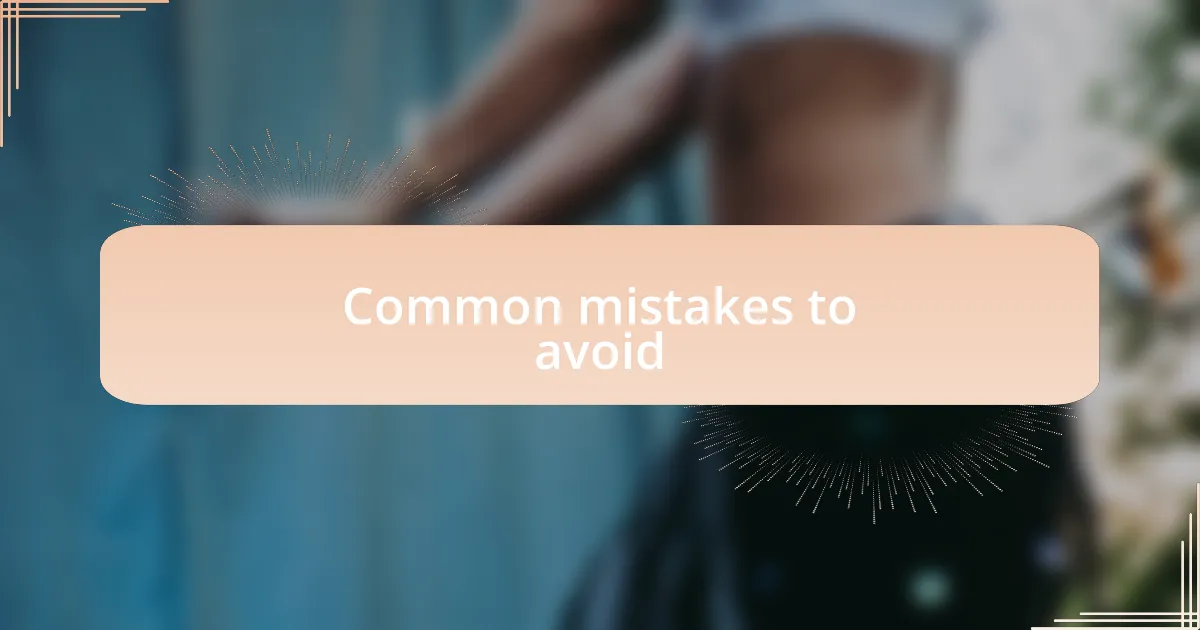
Common mistakes to avoid
When it comes to turns, one common mistake I see is losing balance as you spin. I remember my early days when I would flail my arms wildly, desperately trying to keep myself upright. It wasn’t until I focused on my core stability that everything began to click. By engaging my core, I found that my turns became more controlled and less chaotic. Have you experienced that struggle too? It really makes a difference in your technique.
Another pitfall is rushing the turn itself. In my enthusiasm to execute a perfect spin, I often overlooked the importance of timing and rhythm. Those moments when I forced a quick turn without preparation usually ended in awkward landings. Slowing down my approach and allowing myself to feel the music transformed my spins from clumsy to smooth. Once you realize that every movement deserves its moment, the flow improves dramatically, doesn’t it?
Finally, not breathing during a turn can lead to tension that throws off your center of gravity. There was a time when I held my breath, thinking it would help me stay focused, but it only made me feel stiff. Instead, incorporating deep breaths into my spins has helped me maintain fluidity and grace. Have you tried focusing on your breath? You might be surprised at how such a small change can elevate your performance.
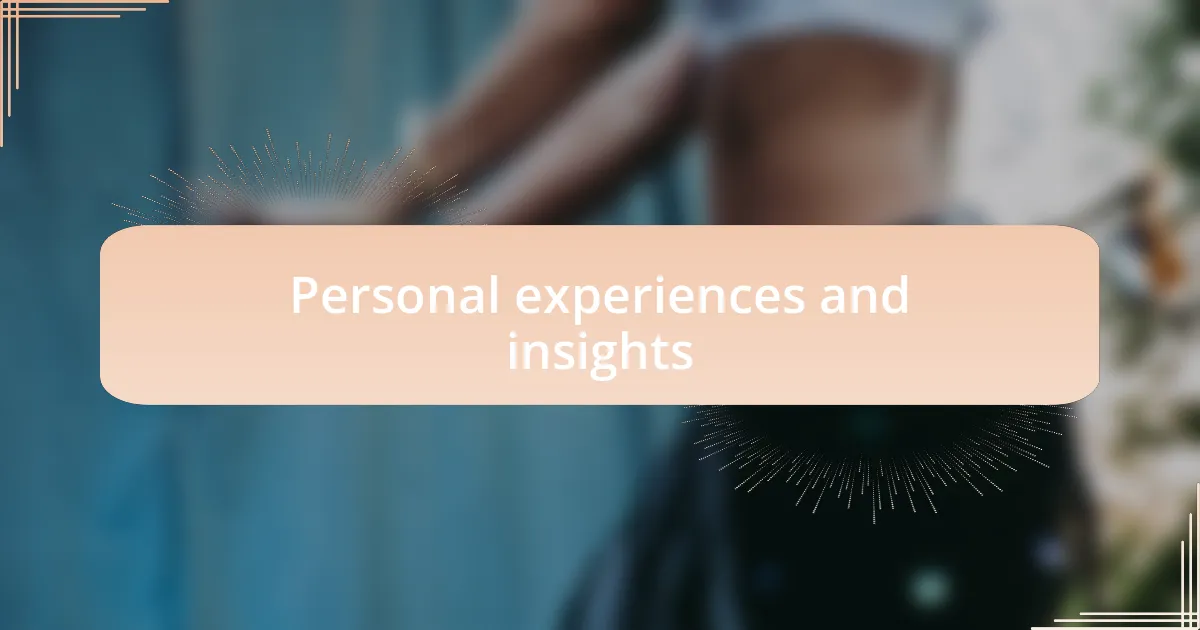
Personal experiences and insights
There was a time when I struggled immensely with my turns. I can vividly recall a practice session where I felt utterly defeated after a series of failed attempts. In that moment, I realized I was treating the turn merely as a mechanical movement instead of a dance expression. It struck me that embracing the artistry of each turn was not just about technique, but also about channeling my emotions into the flow. Have you ever felt that connection between body and spirit while dancing?
Engaging with fellow breakers helped me see turns in a new light. During a cypher, I observed how some dancers would incorporate playful variations into their spins, making what could have been a simple movement come alive. This sparked my creativity, and I began experimenting with my own style. The exhilaration of trying out new moves during practice sessions reminded me of why I fell in love with breakdancing in the first place. How have your peers influenced your approach to specific moves?
As I further developed my skill, I discovered the importance of visualizing each turn before executing it. There were moments when I pictured myself gliding seamlessly, and it gave me a surprising confidence boost. I felt as if I was dancing in sync with the universe, and the turns became less intimidating and more liberating. Have you ever visualized your moves? That mental imagery can truly transform how you experience each spin.